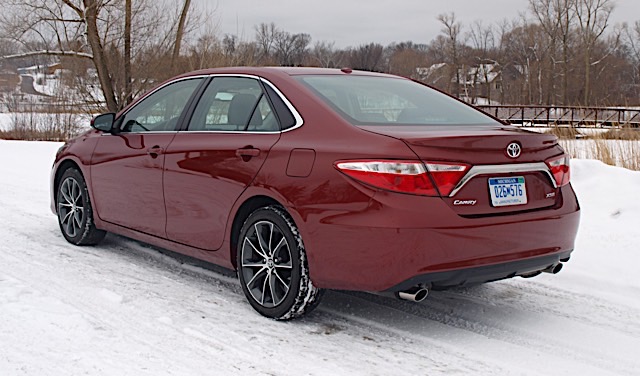Our Rides: Winterizing Your Vehicle (and Yourself)

Certainly, winter has arrived. But is it really a wonderland?
If you commute anywhere across our region, winter presents its own challenges. From plowed highways to caked gravel roads, we often find ourselves enduring the worst nature can throw at us. We could have inches of snow on the ground one day, then a quick melt the next.
We all think we know how to drive during the winter. The truth is that we’re never fully prepared for the first snow or ice on the roads. Let alone have our vehicles ready to handle what’s out there.
How do you get your vehicle ready for this season, even when you’re about a third of the way through it?
First things first, get your vehicle checked out. This is important, so your vehicle can get through each winter to ensure that key components can survive the temperature and moisture changes in the atmosphere. Belts, hoses and windshield wipers are key items to check, as rubber is sensitive to the colder air.

The cooling system, heater, defrosters and windshield washer will also need to be checked. The idea is to ensure optimal performance through colder temperatures. All systems should have enough fluids flowing where they need to be. The heater and defrosters must not only work properly but provide enough heat to keep the windows clear and the cabin comfortable.
Most of all, get your oil changed. Instead of getting a winter mix for your engine oil, stick with what the manufacturer says. If they have a specific oil weight for winter, change it to that until the weather gets warmer.
Lastly—and more importantly—the brakes. On icy and snowy roads, your brakes can wear if used the same as in the rest of the year. Get a brake check to see pad wear and rotor/drum condition.
Of course, the biggest topic regarding winter driving and safety revolves around the one item that meets the road—your tires. Laws regarding winter tires are different from state-to-state. In Minnesota, it is not required to have a set of winter tires. If you do, make sure they’re not studded.

Our recommendation is simple: Have a second set of tires for the winter. Make sure they’re good ones, too!
Not everyone can afford a second set of tires. If you’re in this situation, make sure that your all-season set has more than adequate tread. You can put a penny inside the grooves to see if it covers Lincoln’s head, but you probably want to make sure you have around half tread life for a better chance at getting through winter. If not, replace them.
In theory, you can get through winter on all-season tires. You’ll find that your ability to stop will not be optimal. Tests show that a car on all-season tires on icy surfaces will stop double the distance than a car on winter tires. Something to think about when you hit traffic on the highway.
Not every drive is going to be a safe one. What happens if you get stuck? Whether the road’s closed or you end up in the ditch, you need to be prepared to handle long periods of time until help arrives.

It’s suggested to have such a survival kit available when you’re stranded in a remote area, miles from any gas station, restaurant, auto shop, and so forth. It’s also helpful when you know that your cell phone is low on battery or that the nearest place to have your vehicle serviced is extremely far away.
A winter survival kit may include all of these items: a shovel; windshield scraper and small broom; flashlight with extra batteries; battery-powered radio; water; snack foods like energy bars, raisins and mini candy bars; matches and small candles; extra hats; socks and mittens; first-aid kit with pocket knife; necessary medications; blankets or sleeping bag; tow chain or rope; road salt; sand or cat litter for traction; booster cables; emergency flares and reflectors; fluorescent distress flag and whistle to attract attention; and a cellphone adapter to plug into a lighter.
When making a kit, make sure that it fits in the trunk—or in the passenger compartment if it does not fit with the trunk lid closed. SUVs and hatchbacks offer easier access to the kit within the interior.
However, if you want to avoid having to become stuck or a hazard on the road, some patience and skill will be needed when you’re behind the wheel.

One suggestion that has come up is to practice in a parking lot that hasn’t been plowed. There’s more than enough space to help you handle snow and ice, and what not to do. Also, going slow on the roads and being extremely cautious out there is okay. You’re not a rally driver who can thrash through the snow. It’s not worth being the fastest person in a four-wheel drive vehicle sometimes.
The bottom line is that we will experience a form of winter that will be cold and inhospitable for motorists. By now, we may have already experienced it. Perhaps it’s time to consider getting the vehicle—and yourself—ready for it.
5200 Willson Road, Suite 316 • Edina, MN 55424
©2025 Lavender Media, Inc.
PICKUP AT ONE OF OUR DISTRIBUTION SITES IS LIMITED TO ONE COPY PER PERSON




